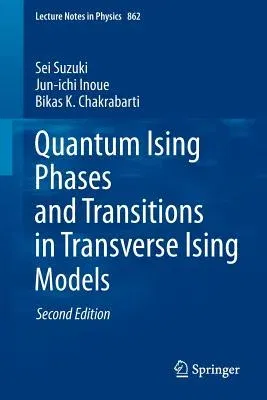Sei Suzuki
(Author)Quantum Ising Phases and Transitions in Transverse Ising Models (2013)Paperback - 2013, 14 December 2012

Qty
1
Turbo
Ships in 2 - 3 days
In Stock
Free Delivery
Cash on Delivery
15 Days
Free Returns
Secure Checkout
Part of Series
Lecture Notes in Physics
Print Length
403 pages
Language
English
Publisher
Springer
Date Published
14 Dec 2012
ISBN-10
364233038X
ISBN-13
9783642330384
Description
Product Details
Book Edition:
2013
Book Format:
Paperback
Country of Origin:
NL
Date Published:
14 December 2012
Dimensions:
23.39 x
15.6 x
2.16 cm
ISBN-10:
364233038X
ISBN-13:
9783642330384
Language:
English
Location:
Berlin, Heidelberg
Pages:
403
Publisher:
Series:
Weight:
580.6 gm

